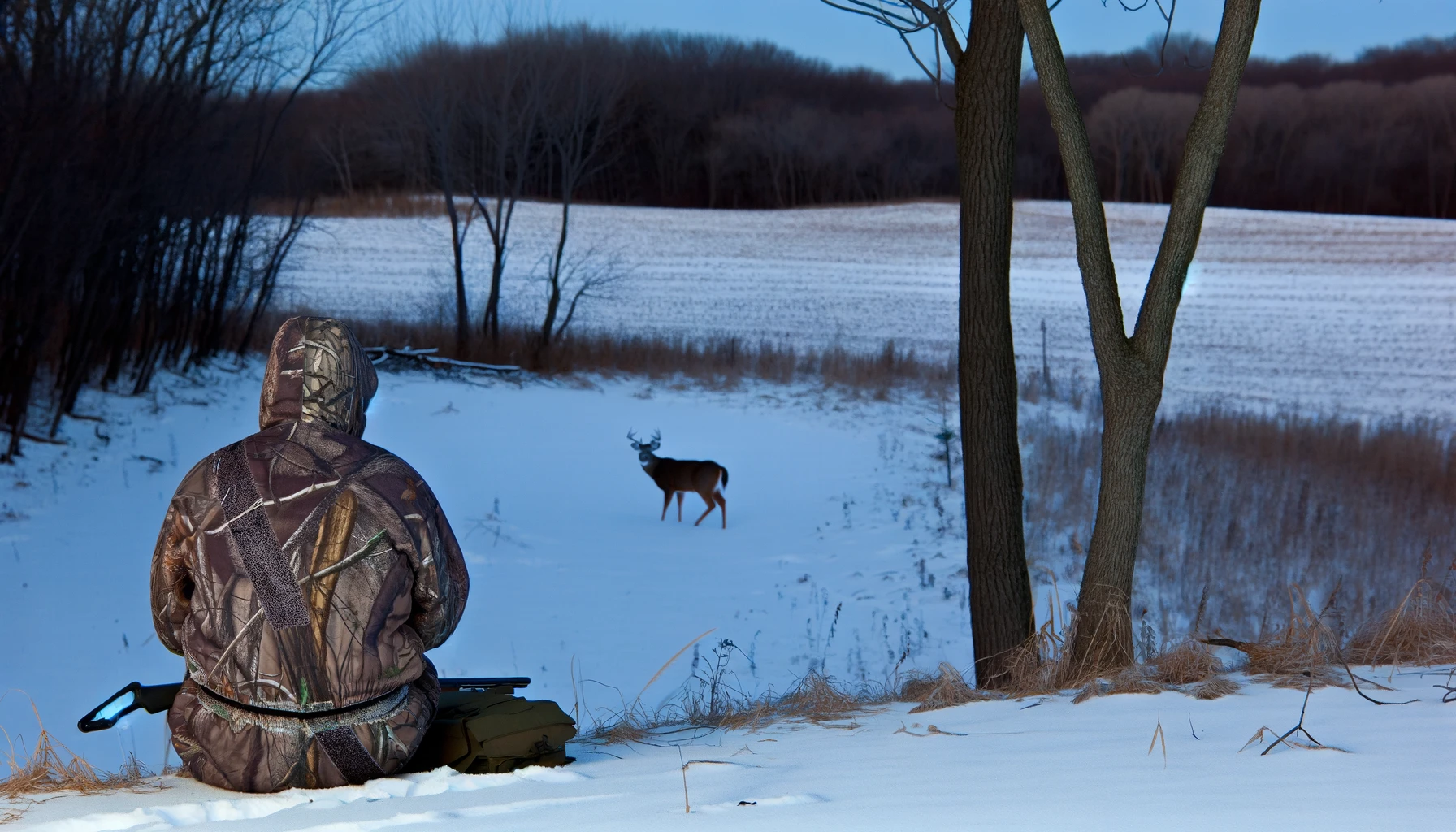
Table of Contents
Hunting late-season bucks presents a unique set of challenges and opportunities for the seasoned hunter. As winter tightens its grip, the landscape changes dramatically, influencing deer behavior and hunting strategies. Understanding these changes and adapting your approach can lead to successful late-season hunts. This guide delves into the strategies for finding and hunting late-season bucks, ensuring your hunting season ends as successfully as it began.
With the onset of colder weather, food sources become scarce, prompting bucks to shift their feeding patterns. Focus on areas where late-season food sources are still abundant, such as agricultural fields with leftover crops, oak stands with acorns, or green plots specifically planted for winter feeding.
Bucks seek thick cover for bedding to shield themselves from harsh winter elements. These areas are typically on south-facing slopes that receive more sunlight or in dense conifer stands that provide better wind protection and thermal cover.
Energy conservation is crucial for survival, leading bucks to limit their movements. They will travel less and focus on short routes between bedding and feeding areas.
Dedicate time to scouting new feeding and bedding areas. Look for fresh signs of buck activity, such as tracks, droppings, and bedding sites. Adjust your hunting spots based on your findings.
Position your stands or blinds closer to the food sources and travel corridors bucks are using. Ensure you have a clear view of the area while staying downwind to avoid detection.
Late-season hunting often requires longer wait times in colder conditions. Dress appropriately in layers and be prepared to stay out longer to catch bucks on their limited feeding forays.
Bucks may still respond to grunts or rattling, albeit less aggressively than in the rut. Use these tools sparingly to avoid spooking wary late-season bucks. Decoys can also be effective, especially near food sources or along travel corridors, to pique the curiosity of a buck.
Late-season buck hunting requires adaptation, patience, and a thorough understanding of how winter affects deer behavior. By focusing on key food sources, adapting your strategies, and preparing for the cold, you can increase your chances of a late-season success. Embrace the challenge of the winter woods, and you may find late-season hunting to be among the most rewarding experiences.
Look for agricultural fields, especially those with corn or soybeans, oak stands with leftover acorns, or areas with winter food plots.
Focus on dawn and dusk when bucks are most likely to be feeding. However, midday hunts can also be productive, as bucks may move during warmer parts of the day.
Invest in quality insulated clothing designed for hunting, use portable heaters in blinds when safe, and keep a thermos with a warm beverage to help maintain your body temperature.
Yes, after experiencing hunting pressure throughout the season, late-season bucks are typically more wary and cautious, requiring stealthier hunting tactics.
Absolutely. Snow can actually benefit hunters by making it easier to spot tracks, feeding areas, and bedding sites. Plus, it enhances visibility against the white backdrop.
Technology is revolutionizing the way we hunt and shoot. From GPS mapping and ballistics calculators…
Hunting during cold weather isn’t just about layering up your boots matter. When you’re sitting…
When you’re building or upgrading your AR-style rifle, one of the key decisions you’ll face…
When it comes to tactical rifle scopes, not all optics are created equal. The differences…
In today’s age of high-tech hunting, drones have transformed the way hunters scout terrain, locate…
Every hunter knows that a steady shot can make or break a hunt. Whether you’re…
This website uses cookies.